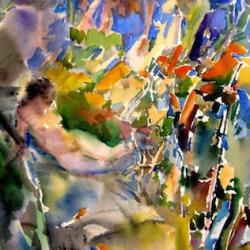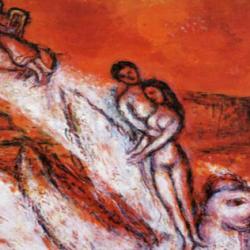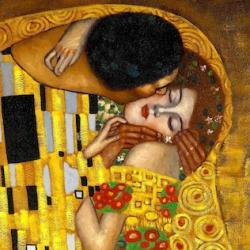INTRODUCTION
The Song of Songs is a love poem, but both Jewish and Christian readers have discerned that it’s something more than that. Ultimately, the Song is nothing less than the gospel.
THE TEXT
“Put me like a seal over your heart, like a seal on your arm for love is as strong as death, jealousy is as severe as Sheol; its flashes are flashes of fire, the very flame of the LORD. Many waters cannot quench love, nor will rivers overflow it; if a man were to give all the riches of his house for love, it would be utterly despised” (Song of Songs 8:6-7).
RETURN TO PARADISE
The Song is full of the imagery of Eden. Solomon uses the word “garden” eight times (4:12, 15, 16 [2x], 5:1; 6:2 [2x]; 8:13), and the poem frequently refers to trees, fruits, flowers, springs. Eden’s garden was Adam’s original sanctuary, and the imagery of the garden in the Song shades over into imagery of the sanctuary. The house where the lovers meet is made from temple materials – cedar and cypress (1:17), and like the temple the garden of love is a place of feasting (2:4; 5:1). Solomon frequently mentions the fragrances that waft from the garden, reminding us of the pacifying smoke from Israel’s sacrifices. The interweaving of imagery in the Song hints at the double reference of the poem: It is a poem of ideal human love, the lovers like unfallen Adam and Eve, but it is also a poem about Yahweh’s trysts with Israel in the love-garden of the temple.
KING AND COUNTRY
Solomon wrote the poem, and his name appears at the beginning, in the middle, and at the end (1:5; 3:7-11; 8:11). The lover of the poem is a king (1:4; 1:12-14). The beloved is a queen, but the beloved is also the land. Land is feminine in the Bible, producing fruit when seeds are planted in her/it. Taken literally, the descriptions of the bride are not entirely complimentary – a woman with teeth like ewes (6:6) and hair like a flock of goats (4:1) may be a turn-off. But Solomon is describing the beauty and fruitfulness of the land. He refers to Jerusalem, Tirzah, Carmel, Lebanon; to vineyards and orchards and pastures; to flocks and herds and wild animals; to the produce of the land, wheat, honey, milk, and wine. As Luther says, the Song is an “encomium of the political order.” For Solomon, leadership arises from love.
JESUS THE BRIDEGROOM
Jesus is the new Adam, and therefore the bridegroom in the restored garden. Jesus is Yahweh incarnate, and so the one who meets His people who are the new temple. Jesus is the greater Solomon, the King whose passion impels Him to give Himself for His Bride.
JESUS THE LOVE
But our sermon text suggests another dimension of the typology. According to the Song, death and Sheol (Hades) meet their match in “love” (“ the Love” in 2:7; 3:5; 8:4, 7), the love that is then described as the “very flame of Yah” (8:6). John’s description of Jesus in Revelation 1 depicts Jesus as the One with the keys to “death and Hades” (Revelation 1:18). Jesus is that love incarnate; He is the incarnate “flame of Yah,” who is not consumed by many waters, the lover who consumes death in pursuit of His bride.















